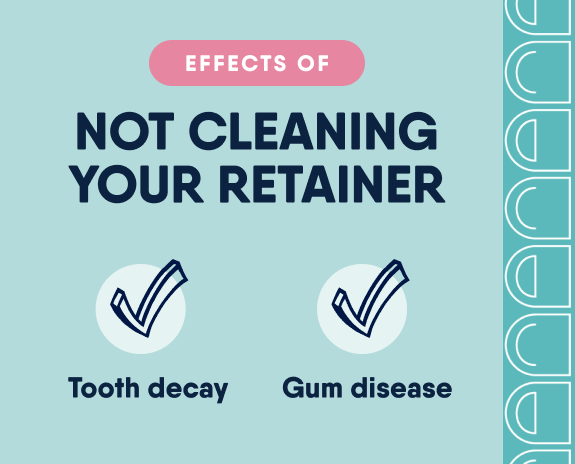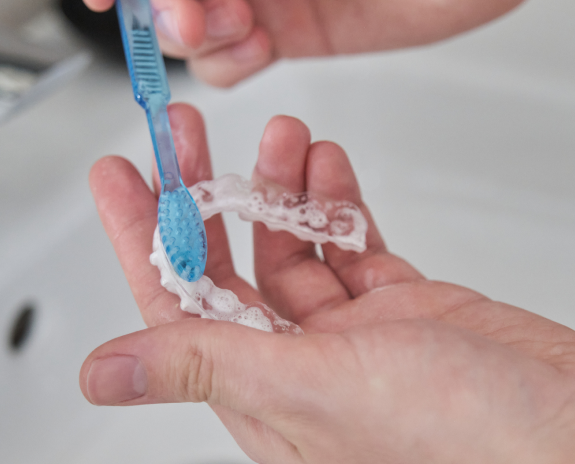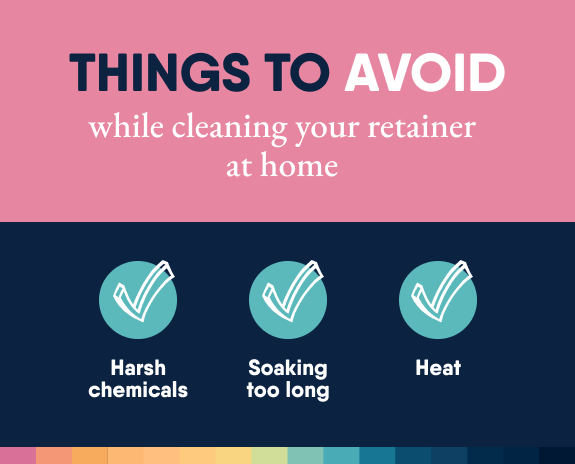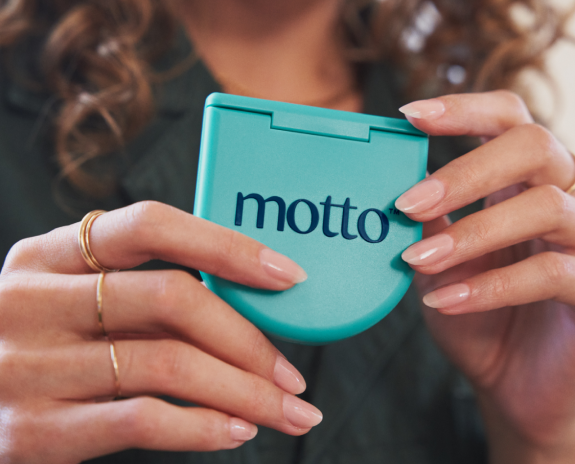How to clean your retainer
Learn useful tips for cleaning your retainers effectively and avoiding any issues that could impact your dental health.
It's important to keep your removable retainer clean to maintain good oral hygiene and ensure its longevity and effectiveness, especially after clear aligner treatment. Plaque and bacteria can accumulate while it's in your mouth, and external contaminants can affect it when it's out. Regular cleaning is crucial for promoting good oral health. Use a soft-bristled toothbrush and be thorough in your cleaning routine. A well-maintained retainer can prevent gum disease, tooth decay and other dental issues.
What happens if you don’t clean your retainer?
Failing to care for a removable retainer properly can lead to significant problems. Bacteria and plaque buildup in the nooks and crannies of the retainer's plastic, and this buildup can compound over time if poor cleaning habits persist.

The gunk that takes refuge in the retainer can cause tooth decay and gum disease, turning the retainer from a solution into a problem. If your oral health declines, the retainer may be the least of your concerns - corrective surgery, expensive dental work and more could be in the future if you fail to clean the retainer.
Good cleaning practices also help the retainer maintain its viability, utility and longevity. The longer your retainer is in good working order, the less you have to worry about it.
Does the retainer’s material matter when cleaning?
A retainer's material has a notable influence on how it should be cleaned. Clear removable retainers are usually made of plastic. Some certain chemicals and materials could damage the plastic if misused. The same goes for permanent retainers or removable Hawley retainers, which contain metal that can corrode. Be sure to understand how certain cleaning practices may impact the retainer's material.

The best ways to clean your retainer at home
Here are some tried and true methods for cleaning your removable retainer at home:
Rinse the retainer with water
Start by rinsing the retainer in lukewarm water. Rinsing it first will clean any of the major debris and make deep cleaning easier and more efficient. Using lukewarm water is key, as anything too hot can warp the plastic and render the retainer useless.
Scrub the retainer with a toothbrush
Rinsing only gets rid of the big stuff. A toothbrush can dig into the hard-to-reach spots and get at some of the most stubborn debris. Scrub the retainer gently with a soft-bristled toothbrush and pay attention to the back, front and sides. This will help remove bacteria, plaque and stains. A soft-bristled toothbrush is key, as a hard-bristled brush can scratch or damage both plastic retainers and metal retainers.
Place the retainer in a cleaning solution
It is important to research the best available retainer-specific cleaning solutions based on your retainer's material. Your nearby drugstore likely has several options to help clean the retainer. Some people skip this step, believing a toothbrush and soap are good enough. In fact, retainer cleaning solutions help get even more bacteria and plaque, especially the bits you can't see. Even if the retainer looks brand new after scrubbing with a toothbrush, always soak it in a cleaning solution for however long the product suggests.

Things to avoid while cleaning your retainer at home
Cleaning a retainer can be hazardous if done incorrectly. Here are some things to avoid:
Harsh chemicals
Some chemicals in certain soaps, toothpastes and cleaning solutions may be too harsh to use on your retainer. For example, avoid toothpaste that contains whitening agents or abrasive ingredients, as they can scratch or damage the retainer. Consider talking to your orthodontist or doing some research to learn about which products are best for your retainer's material. Using the wrong product could damage the retainer and force you to get re-fitted.
Soaking too long
When soaking a retainer in a cleaning solution or a homemade baking soda solution, always keep timing in mind. Read the package instructions before soaking. Warping the plastic or metal is easy if the retainer sits in the solution for too long.
Heat
Always rinse and clean a plastic or metal retainer with lukewarm or cool water. Retainers made from these materials will warp or degrade quickly if exposed to hot water, even for a short period of time.
How often should you clean your retainer?
Ideally, retainers should be cleaned daily. This includes rinsing, scrubbing and using a cleaning solution. At least once per week, it may be wise to do a deeper cleaning, taking more time to make sure you get all the crevices. If you have any questions about clear aligners and how to clean them, Motto™ can help.

Learn the best way to clean retainers with Motto
Schedule an appointment with Motto™ today to get fitted with a plastic retainer. Our experts can help you learn how aligners work and create a cleaning routine, answering any questions you may have about cleaning your retainer.

